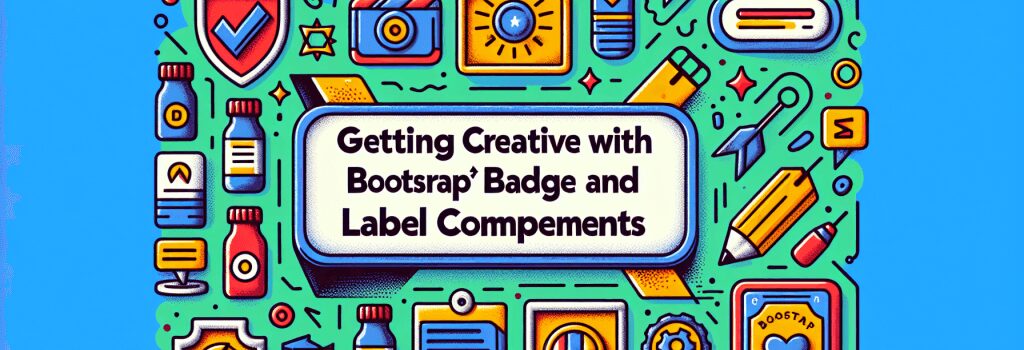Getting Creative with Bootstrap’s Badge and Label Components

Enhancing Web Design with Bootstrap’s Badge and Label Components
In the modern web development landscape, the aesthetic appeal of a website plays a pivotal role in its success. Bootstrap, a powerful and popular CSS framework, offers a wide array of components that can significantly enhance the visual appeal of your web projects. Among these are the Badge and Label components, which are small but impactful elements that can be used creatively to improve user interface design. This article will delve into how you can leverage Bootstrap’s Badge and Label components to add flair and functionality to your web projects.
Understanding Badge and Label Components
Bootstrap Badges: Badges are small count and labeling components that are used to add additional information to any content. They are typically used to display numbers or status information, such as the number of unread messages in an inbox. Badges can dynamically update, making them perfect for real-time applications.
Bootstrap Labels: Labels, while phased out in Bootstrap 4 in favor of the ;badge> class, played a similar role in previous versions of Bootstrap. They were used to offer contextual typographic feedback. For the sake of understanding, we’ll focus on the roles both of these components played historically and how ;badge> has evolved in Bootstrap’s latest versions.
Adding Creativity to Your Web Design with Badges
Highlighting New or Important Content
Badges are perfect for drawing attention to new or important items on your website. For instance, adding a “New” badge next to a recently added product or article can attract user attention.
Status Indicators
Use badges to display status indicators on profile pictures, messages, or products. For instance, a green badge could signify an online status, while a red badge might indicate offline.
Notification Counters
Integrate badges with your notification system to show live counters. This dynamic utilization makes your website feel more interactive and keeps users engaged by alerting them to unread messages or notifications.
Design Customization Tips for Badge and Label Components
Custom Colors and Styles
While Bootstrap comes with pre-defined styles, don’t hesitate to customize the badges and labels to match your website’s theme. Use CSS to alter the background color, border, and text color to stand out or blend in as needed.
Incorporating Icons
For a more visually appealing design, consider adding icons within your badges or labels. Icons can convey information more efficiently and add a stylish touch to your components.
Animations and Interactivity
To make badges more engaging, incorporate CSS animations. A simple pulse animation on a notification badge can make it more noticeable. Similarly, adding hover effects can improve user interaction, making your website more dynamic.
Conclusion
Bootstrap’s Badge and Label components, albeit small, can significantly influence the aesthetics and functionality of your web designs. By creatively utilizing these components, you can enhance user engagement, highlight important content, and provide a polished, professional look to your websites. Remember, the key to effectively using these components lies in customization and thoughtful integration into your design strategy.
Tailor these components to suit your design needs and watch as they transform the user experience on your website. With a little creativity and customization, Bootstrap badges and labels can elevate your web projects to the next level.


